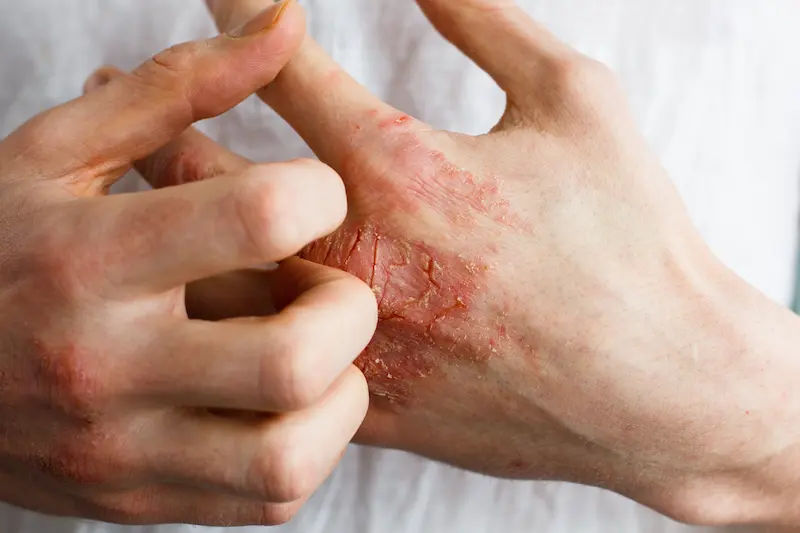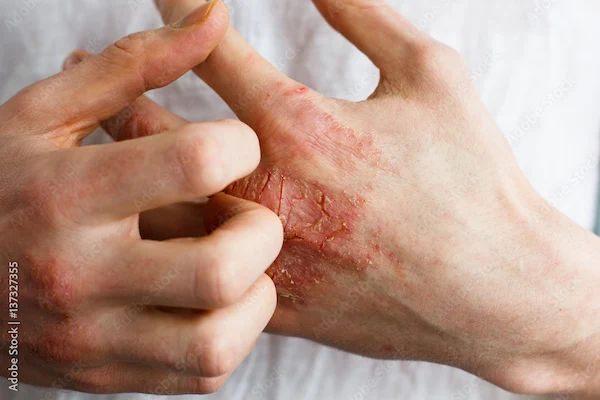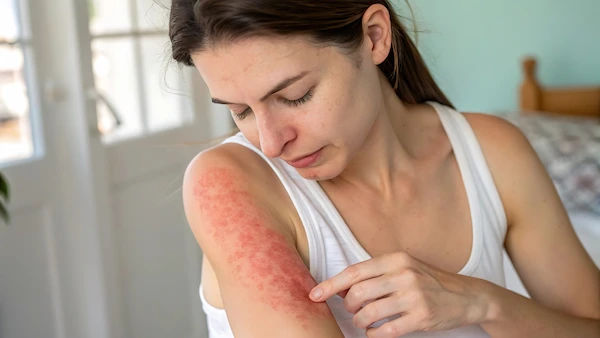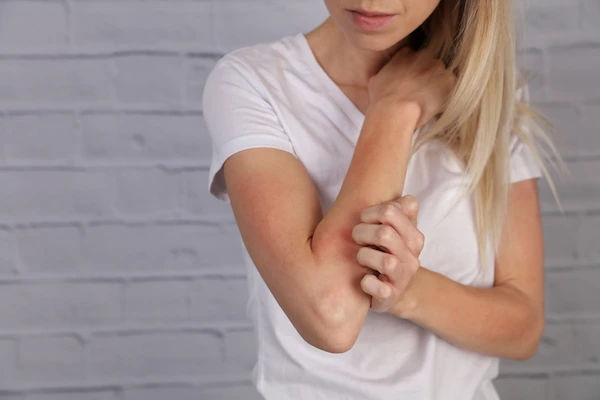What Leads To Signs Of Eczema Types
Discover the common causes, triggers, and various types of eczema (dermatitis). Learn to recognize the signs of atopic, contact, dyshidrotic, and other forms to understand and manage your skin condition.

Written by Dr. J T Hema Pratima
Reviewed by Dr. D Bhanu Prakash MBBS, AFIH, Advanced certificate in critical care medicine, Fellowship in critical care medicine
Last updated on 27th Oct, 2025
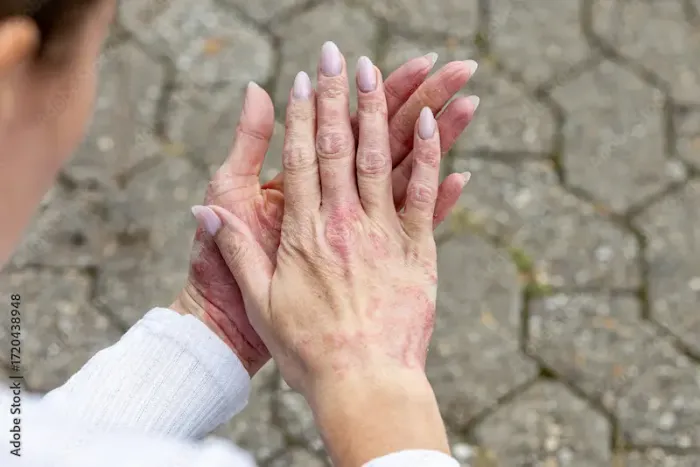
Introduction
Eczema is more than “dry, itchy skin.” It’s a group of skin conditions with shared symptoms—itch, redness, scaling—but different root causes, triggers, and treatment nuances. If you or a loved one is searching for clarity about eczema types and why the signs appear, you’re in the right place. In this guide, we’ll unpack how eczema happens, the major eczema types, what leads to flare-ups, and how to manage them with evidence-based care. We’ll also share practical day-to-day tips, discuss when to seek medical help, and highlight options if symptoms don’t improve. Throughout, we’ll use plain language and draw on top dermatology sources to help you make informed decisions. By the end, you’ll have a clear understanding of eczema types, why signs show up on your skin, and what you can do next.
What we reviewed to build this guide: The top-ranking pages for “eczema types” and “types of eczema” commonly explain seven major types, core symptoms, triggers, and treatment options. We analyzed content from the American Academy of Dermatology, National Eczema Association, NHS, Mayo Clinic, DermNet NZ, Cleveland Clinic, Healthline, MedlinePlus, and Medical News Today to ensure accuracy and completeness.
What Is Eczema? The Skin Barrier and Immune Story
Eczema (dermatitis) describes conditions where the skin barrier is compromised and the immune system becomes overactive, leading to dryness, inflammation, and the hallmark itch-scratch cycle. In atopic dermatitis, the most common form of eczema, a combination of genetic predisposition (including changes in skin barrier proteins like filaggrin), immune dysregulation (often a Th2-skewed response), and environmental triggers drives symptoms .
Think of your skin like a brick wall: corneocytes (“bricks”) are held together by lipids (“mortar”). In eczema, that mortar can be weak, letting water escape and irritants/allergens enter. As irritants and microbes penetrate, the immune system reacts, causing redness, itch, swelling, and sometimes weeping. Scratching further damages the barrier, creating a loop: itch → scratch → more inflammation → more itch.
Why this matters: Understanding that eczema is both a barrier and an immune condition explains why moisturizers (to restore the barrier) and anti-inflammatory treatments (topical steroids or non-steroidals) both play crucial roles. It also clarifies why triggers such as harsh soaps, fragrances, stress, and even climate changes can spark flares.
Quick data points
• Atopic dermatitis affects about 10% of people in the U.S., including up to 20% of children.
• Skin colonization with Staphylococcus aureus is far more common in atopic dermatitis, and higher colonization often correlates with worse severity.
Unique insight: Many people chase a single “allergy” to blame for eczema. While allergens can matter—especially in contact dermatitis—most atopic dermatitis reflects a barrier-first problem. Building a daily barrier routine is often the highest-yield step, even when you’re still discerning personal triggers.
Consult a Top General Physician
The Major Types of Eczema and How They Look
Eczema isn’t one-size-fits-all. Here are the most recognized types and their typical signs and triggers.
Atopic dermatitis (AD)
What you see: Dry, itchy, red or darker patches (on brown/Black skin, lesions can look purple-brown, gray, or ashy rather than “red”). In infants: cheeks, scalp; in older children/adults: flexural areas (elbows, knees), neck, eyelids, hands.
What leads to signs: Genetic barrier issues, immune overactivity, environment (soaps, fragrances, wool, cold/dry weather), infections (S. aureus), stress.
Notes: Tends to wax and wane. Often family history of allergies or asthma.
Contact dermatitis (irritant and allergic)
Irritant contact dermatitis: Reaction to harsh substances (detergents, solvents, frequent handwashing). Skin stings/burns more than itches; common on hands.
Allergic contact dermatitis: Delayed hypersensitivity to allergens (nickel, fragrances, preservatives, rubber accelerators, hair dye). Itchy, scaly, sometimes blistering patches where allergen touches skin. Patch testing can identify culprits.
Nummular (discoid) eczema
• Coin-shaped, very itchy plaques that can be mistaken for ringworm. Often on legs/arms. Triggers include dry skin, winter, prior skin injury; sometimes colonized with bacteria [8].
Dyshidrotic eczema (pompholyx)
• Tiny, deep-seated, very itchy blisters on sides of fingers, palms, and soles. Stress, sweating, nickel sensitivity, and wet work can trigger flares.
Seborrheic dermatitis
• Greasy, flaky patches on scalp (dandruff), eyebrows, sides of nose, chest. Often worsens in cold/dry weather. Linked to Malassezia yeast overgrowth and barrier sensitivity.
Stasis dermatitis (venous eczema)
• On lower legs/ankles in people with chronic venous insufficiency. Skin may be brownish, swollen, itchy, and scaly; ulcers can develop if untreated.
Neurodermatitis (lichen simplex chronicus)
• One or few intensely itchy spots—often neck, ankles, wrists. Repeated scratching leads to thickened, leathery plaques.
Asteatotic eczema (eczema craquelé)
• Very dry, cracked “crazy paving” skin, especially in older adults in winter, on shins and arms .
Unique insight: Mixed patterns are common. For example, someone with atopic dermatitis might also have allergic contact dermatitis from fragrance or nickel, or dyshidrotic flares from frequent handwashing. The label guides treatment—but your personal pattern determines what to prioritize.
What Leads to the Signs?: Triggers and Risk Factors
Why do flares happen when they do? Several interacting factors can lead to eczema signs.
Genetics and skin barrier
• Filaggrin gene variants and other barrier protein differences increase risk of atopic dermatitis and dryness. When the barrier is leaky, even mild soaps or cold air can provoke itch and scaling.
Microbiome shifts and infections
• People with AD frequently have more S. aureus on skin. This bacteria can produce toxins that inflame skin and worsen itch [5]. Impetiginization (honey-colored crusting) signals secondary bacterial infection; eczema herpeticum (sudden painful blisters, fever) is a viral emergency.
Irritants and allergens
• Fragrances, preservatives (like methylisothiazolinone), nickel, rubber chemicals, and hair dye (PPD) commonly cause allergic contact dermatitis.
• Irritants like detergents, sanitizers, and frequent wet work contribute to irritant hand eczema.
Climate and hard water
• Cold, dry air and low humidity increase transepidermal water loss, making winter flares common.
• Hard water (high calcium/magnesium) may damage the skin barrier and increase susceptibility to irritation, particularly in infants genetically prone to eczema. Water softening hasn’t consistently improved established eczema, but minimizing harsh surfactants is still wise.
Stress and hormones
• Stress can amplify itch perception and trigger scratching. Hormonal shifts—premenstrual or postpartum—can briefly worsen eczema.
Diet and food allergens
• In infants and children with moderate-severe AD, true food allergies can aggravate eczema—but blanket elimination diets aren’t recommended without guidance due to nutrition risks. Focus on confirmed allergies with medical advice.
Unique insight: Use a “Trigger Ledger.” For one month, note date, location, product used (soap, laundry, moisturizer), weather, stress, sweat, and diet changes. Patterns often emerge (e.g., flares 24–48 hours after wearing a nickel belt or switching detergents) that are easy to miss day to day.
How Eczema Is Diagnosed and When to See a Doctor?
Diagnosis is clinical—based on history and skin exam. No single blood test confirms eczema.
Evaluation and tests
• Atopic dermatitis: Diagnosed by typical patterns (itch, chronic/relapsing course, characteristic distribution).
• Contact dermatitis: Patch testing is the gold standard for suspected allergic causes (nickel, fragrance mix, preservatives, rubber accelerators).
• Infection: Swabs can guide antibiotics if crusting or pus suggests bacterial infection.
• IgE or “food panels” are not routinely helpful for adult AD; targeted testing is used when history suggests a true allergy. Vitamin D deficiency may worsen dryness in some individuals; test and treat only if clinically indicated.
When to see a doctor?
• If itching or rash persists beyond two weeks despite moisturizers and gentle care, or if sleep is impaired, consult a dermatologist. If symptoms persist beyond two weeks, consult a doctor online with Apollo 24|7 for further evaluation, and consider booking a physical visit if needed.
• Seek urgent care for signs of infection (spreading redness, warmth, pus, fever) or suspected eczema herpeticum (painful blisters with fever).
Practical notes
• Photographs help track flares and responses.
• Bring a list of products and detergents to appointments; this speeds patch test selection.
• If lab tests are planned for overall health (e.g., vitamin D, HbA1c when considering metabolic health), Apollo 24|7 offers a convenient home collection.
Unique insight: Ask your clinician about “differential diagnosis.” Conditions like scabies, tinea (fungal infection), psoriasis, and cutaneous T-cell lymphoma can mimic eczema. A skin scraping, KOH test, or biopsy is sometimes needed.
Treatments That Work (and How They Differ by Type)
Effective management blends barrier repair, trigger control, and anti-inflammatory therapies. Your regimen might shift with seasons and severity.
Foundation for all eczema types
• Moisturize daily: Use thick, fragrance-free ointments/creams (petrolatum, ceramide-rich, or glycerin-based). Apply within 3 minutes of bathing.
• Gentle cleansing: Lukewarm showers; fragrance-free, non-soap cleansers; pat—not rub—dry.
• Trigger control: Fragrance-free laundry detergent; avoid fabric softeners; wear soft, breathable fabrics; protect hands during wet work.
Topicals
• Topical corticosteroids: First-line for flares. Potency depends on site (low for face/folds; medium for trunk/limbs; brief high potency for thick plaques).
• Non-steroidal options: Calcineurin inhibitors (tacrolimus/pimecrolimus) for sensitive areas/maintenance; PDE4 inhibitor (crisaborole) for mild–moderate AD.
• Antimicrobials: Short courses of topical or oral antibiotics for infected patches; antifungals for seborrheic dermatitis when yeast contributes.
Systemic and phototherapy for moderate–severe AD
• Narrowband UVB phototherapy can reduce itch and inflammation.
• Biologics (e.g., dupilumab, tralokinumab) and JAK inhibitors (upadacitinib, abrocitinib) help when topicals aren’t enough. Discuss risks/benefits with your dermatologist.
Type-specific tips
• Atopic dermatitis: Consider wet wrap therapy for severe flares—applying topical medication and moisturizer, then damp and dry layers for several hours can quickly calm skin. Staph colonization may improve with optimized skin care; dilute bleach baths are sometimes used under medical guidance.
• Contact dermatitis: Identify and eliminate allergen/irritant. Patch testing is often the turning point. Once avoided, many patients need minimal medication.
• Dyshidrotic eczemA. Short bursts of medium–high potency topical steroids are often needed; reduce wet work, manage hyperhidrosis, and evaluate for nickel sensitivity.
• Nummular eczemA. Intensive moisturization plus medium–high potency steroids; assess for bacterial colonization if plaques are weepy or crusted.
• Seborrheic dermatitis: Use antifungal shampoos (ketoconazole, selenium sulfide, zinc pyrithione) 2–3 times weekly; low-potency steroids or calcineurin inhibitors for face.
• Stasis dermatitis: Elevation, compression therapy for venous disease (after ruling out arterial disease), gentle topical anti-inflammatories, and wound care if ulcers are present.
• Neurodermatitis: Break the itch-scratch cycle with occlusion (bandages), nighttime sedating antihistamines when appropriate, and habit-reversal strategies.
Unique insight: Try the “3–2–1 routine” during flares: 3 days of anti-inflammatory treatment (as directed), 2 daily moisturizer applications, 1 key trigger removed (e.g., fragrance, a specific soap, or a nickel item). Reassess; often one change yields outsized benefits.
Daily Prevention and Itch Control Strategies
Small, consistent choices can prevent big flares.
Bathing and moisture
• Bathe or shower briefly in lukewarm water; add a bland bath oil if helpful. Apply moisturizer within 3 minutes to seal in water.
• Ointments are most occlusive; creams are good compromises; lotions are least occlusive and often not enough for moderate AD.
Clothing and laundry
• Choose soft cotton or bamboo; avoid scratchy wool. Wash new clothes before wearing them.
• Use fragrance-free detergent; skip fabric softeners; consider an extra rinse. This is an easy, high-yield step for sensitive skin.
Home and climate
• Aim for moderate indoor humidity (40–50%). In winter, use a humidifier and keep room temperature comfortable, not hot.
• If you have hard water, prioritize gentle cleansers and thorough rinsing; moisturize more frequently.
Itch hacks
• Keep nails short; use cold compresses to blunt itch.
• Distract-and-delay method: When itch hits, set a 60-second timer and apply moisturizer or cool gel; many sensations peak then fade.
• Mind-body: Stress management (breathing, CBT-i for sleep, brief yoga) reduces scratch urges.
Special considerations (babies, hands/feet, darker skin)
• Babies: Focus on daily emollients and avoiding fragrances; consult a clinician for steroid strength and duration.
• Hands/feet: Use barrier creams before work; wear cotton liners under nitrile gloves; moisturize after every wash.
• Darker skin: Inflammation may look darker rather than red; risk of post-inflammatory hyperpigmentation is higher—use sun protection and gentle care to minimize marks.
•
If your condition does not improve after trying these methods, book a physical visit to a doctor with Apollo 24|7 to personalize your plan.
Unique insight: Create “eczema stations”—a basket with your moisturizer, a gentle cleanser, and cotton gloves in key spots (bathroom, bedside, work bag). Friction and forgetfulness are underrated reasons routines fail.
Conclusion
Eczema isn’t just “dry skin”—it’s a complex interaction between a fragile skin barrier, the immune system, and the world around you. Recognizing your specific eczema type and the triggers that lead to your signs is the fastest route to relief. Start with the basics: gentle cleansing, daily moisturizers, and common-sense trigger control. Layer in targeted treatments for flares and consider patch testing if contact allergens might be involved. Remember that eczema care is dynamic—your skin’s needs change with seasons, stress, and life events. If symptoms persist beyond two weeks or disrupt your sleep and quality of life, consult a doctor online with Apollo 24|7 for further evaluation, or book a physical visit for personalized care. With a thoughtful routine, evidence-based treatments, and support from a knowledgeable clinician, most people can dramatically reduce flares and start enjoying comfortable skin again.
Consult a Top General Physician
Consult a Top General Physician

Dr. Vijay Kumar Shrivas
General Physician/ Internal Medicine Specialist
20 Years • MBBS, DNB - General Medicine Internal Medicine
Bilaspur
Apollo Hospitals Seepat Road, Bilaspur
(75+ Patients)

Dr. J M Dua
General Physician/ Internal Medicine Specialist
43 Years • MBBS, MD
Delhi
Apollo Hospitals Indraprastha, Delhi

Dr. Mira Govindarajan
General Physician/ Internal Medicine Specialist
24 Years • MD., MHA
Chennai
Apollo Medical Centre Kotturpuram, Chennai

Dr Anand Jat
General Physician/ Internal Medicine Specialist
8 Years • MBBS, MD Medicine
Bhopal
Apollo Sage Hospitals, Bhopal

Dr. Jagadeesh C
General Physician/ Internal Medicine Specialist
20 Years • MBBS, MD, FRCP, FCCP
Chennai
Apollo Hospitals Greams Road, Chennai
(100+ Patients)
Consult a Top General Physician

Dr. Vijay Kumar Shrivas
General Physician/ Internal Medicine Specialist
20 Years • MBBS, DNB - General Medicine Internal Medicine
Bilaspur
Apollo Hospitals Seepat Road, Bilaspur
(75+ Patients)

Dr. J M Dua
General Physician/ Internal Medicine Specialist
43 Years • MBBS, MD
Delhi
Apollo Hospitals Indraprastha, Delhi

Dr. Mira Govindarajan
General Physician/ Internal Medicine Specialist
24 Years • MD., MHA
Chennai
Apollo Medical Centre Kotturpuram, Chennai

Dr Anand Jat
General Physician/ Internal Medicine Specialist
8 Years • MBBS, MD Medicine
Bhopal
Apollo Sage Hospitals, Bhopal

Dr. Jagadeesh C
General Physician/ Internal Medicine Specialist
20 Years • MBBS, MD, FRCP, FCCP
Chennai
Apollo Hospitals Greams Road, Chennai
(100+ Patients)
More articles from Eczema
Frequently Asked Questions
Q1: What’s the difference between atopic dermatitis and contact dermatitis?
Atopic dermatitis is a chronic, often genetic condition involving barrier dysfunction and immune activation. Allergic contact dermatitis is an immune reaction to a specific allergen (like nickel or fragrance). Patch testing helps confirm allergic contact dermatitis.
Q2: Can hard water cause eczema?
Hard water doesn’t “cause” eczema by itself, but it can worsen barrier damage and irritation, especially in people prone to eczema. Using gentle cleansers and moisturizing more often can help mitigate this risk.
Q3: What is the best moisturizer for atopic dermatitis in adults?
Thick, fragrance-free ointments or creams with ceramides, glycerin, or petrolatum are most effective. Apply within three minutes after bathing for best results.
Q4: How do I know if my hand rash is dyshidrotic eczema?
Dyshidrotic eczema typically shows tiny, very itchy blisters on the sides of fingers, palms, or soles. Triggers include wet work, stress, and nickel. A clinician can confirm and recommend treatment.
Q5: When should I consider patch testing for allergic contact dermatitis?
If your eczema is localized to specific areas (e.g., wrists, earlobes, under watchbands), flares with certain products, or doesn’t improve despite good skin care, patch testing can identify allergens to avoid.
